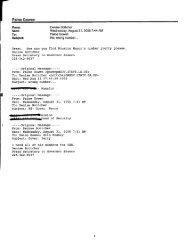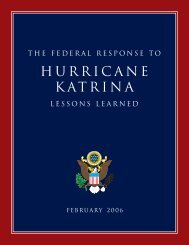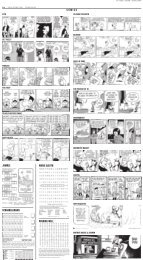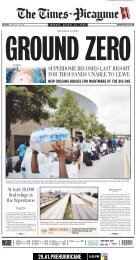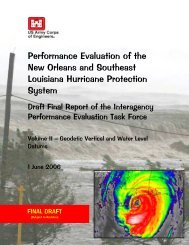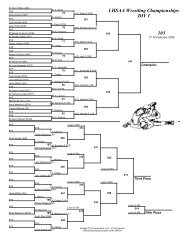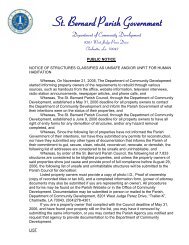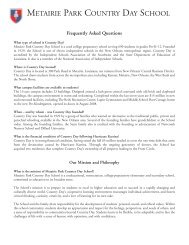IPET Report 3 Vol VIII
IPET Report 3 Vol VIII
IPET Report 3 Vol VIII
You also want an ePaper? Increase the reach of your titles
YUMPU automatically turns print PDFs into web optimized ePapers that Google loves.
geographical region that may be considered uniformly impacted by any given hurricane or over<br />
an extended region where spatial homogeneity of the hurricane loads cannot be assumed. For<br />
flood hazard, return-period analysis is generally easier than risk analysis because hurricane<br />
severity may be ranked using surrogate quantities (such as a rough estimate of maximum surge)<br />
that are much easier to calculate than the flooding conditions themselves.<br />
Since medium to long return periods are of interest, historical methods are discarded. Both JP<br />
and MC methods can handle such return periods. Monte Carlo approaches face the problem of<br />
sorting out the potentially damaging events from large suites of simulated hurricane scenarios.<br />
This is not a trivial problem for the geographically extended and differently vulnerable system<br />
we are considering. For these reasons, the joint probability approach has been selected. This<br />
approach is further described in the following sections.<br />
To implement a joint probability method for hurricane hazard, it is convenient to describe<br />
hurricanes at landfall through the following parameters<br />
• ΔP (mb) = central pressure deficit at landfall<br />
• R max (km) = radius to maximum winds at landfall<br />
• X (km) = longitudinal landfall location relative to downtown New Orleans (positive if<br />
east of New Orleans)<br />
• θ (degrees) = direction of storm motion at landfall, (θ = 0 for tracks pointing north,<br />
increasing clockwise)<br />
• V (m/s) = storm translation speed at landfall<br />
• B = Holland’s radial pressure profile parameter at landfall (Holland 1980)<br />
While the variation of these parameters before and after landfall is also of interest, the primary<br />
characterization of hurricanes required in the risk studies is in terms of their properties at<br />
landfall. Hence the main tasks of the hazard quantification for the initiating events in the risk<br />
analysis is the estimation of the hurricane recurrence rate and the evaluation of the wave and<br />
surge loads over a suitable range of characteristic parameters.<br />
Hurricane Recurrence at Landfall<br />
Information used to estimate recurrence rates includes historical data sets (mainly NOAA’s<br />
HURDAT data for frequency, ΔP , X, θ and V and data on R max from Ho et al. 1987) as well as<br />
published distribution results. The HURDAT data set (Jarvinen et al. 1984, and recent updates)<br />
has been used to extract values of ( ΔP , X, θ, V) at landfall over the stretch of coastline between<br />
longitudes 85W and 95W. For recurrence analysis, only storms of hurricane strength at landfall<br />
have been considered (defined as those having measured or estimated ΔP ≥ 25 mb) since 1890.<br />
Earlier events have been neglected because prior to 1890 the historical record is incomplete and<br />
less accurate. The HURDAT data set has been used also to analyze pre-landfall conditions.<br />
<strong>Vol</strong>ume <strong>VIII</strong> Engineering and Operational Risk and Reliability Analysis <strong>VIII</strong>-29<br />
This is a preliminary report subject to revision; it does not contain final conclusions of the United States Army Corps of Engineers.



